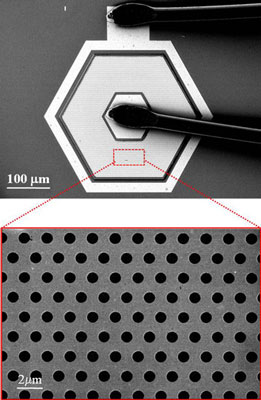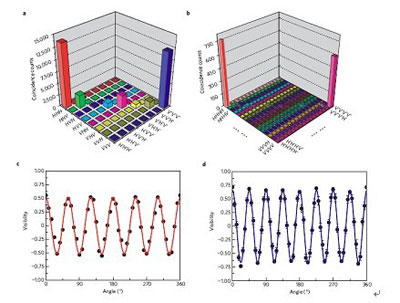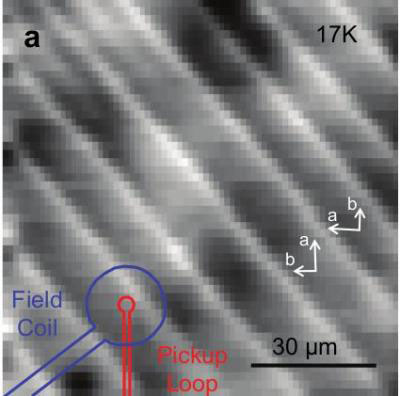Carl Zeiss invites all users of ZEISS electron and ion microscopes to enter the first Carl Zeiss Nano Image Contest - Think you've created a Nano-masterpiece? The four winners will receive a cinemizer Plus 3D video viewer from Carl Zeiss.
May 19th, 2010
Read more
To develop a material with high resistance to wear: that was the objective of a research team. For tools and components specifically subjected to load, their solution delivers an extended product lifespan with better performance characteristics.
May 19th, 2010
Read more
Silicon carbide is an up-and-coming semiconductor material. In a thesis project, the qualities of the crystals and the epitaxial layers underwent precise analysis. Another project combines the advantages of crystalline thin-film solar cells with a back contact structure.
May 19th, 2010
Read more
 To lower the fuel consumption of airplanes and ships, it is necessary to reduce their flow resistance, or drag. An innovative paint system makes this possible. This not only lowers costs, it also reduces CO2 emissions.
To lower the fuel consumption of airplanes and ships, it is necessary to reduce their flow resistance, or drag. An innovative paint system makes this possible. This not only lowers costs, it also reduces CO2 emissions.
May 19th, 2010
Read more
In partnership with A*STAR, Fujitsu will provide cutting-edge methodology to drive research for diagnosis of cancer and diseases.
May 19th, 2010
Read more
By adding a subtle nudge to each of more than 1 billion search requests every day, Google may be steering the direction of public discussion.
May 19th, 2010
Read more
 Researchers develop lens-less, gold-covered 'microlens' that enhances imaging signal without increasing noise.
Researchers develop lens-less, gold-covered 'microlens' that enhances imaging signal without increasing noise.
May 18th, 2010
Read more
At the scale of the very small, physics can get peculiar. A University of Michigan biomedical engineering professor has discovered a new instance of such a nanoscale phenomenon - one that could lead to faster, less expensive portable diagnostic devices and push back frontiers in building micro-mechanical and lab-on-a-chip devices.
May 18th, 2010
Read more
A new study unlocks the previously unknown structural features that underlie the incredible elastic resilience of fibrin, the main protein in blood clots.
May 18th, 2010
Read more
 Ten-qubit hyper-entangled Schroedinger cat state was successfully generated recently by a research group from the Quantum Physics and Quantum Information (QPQI) Division of the Hefei National Laboratory for Physical Sciences at Microscale at the University of Science and Technology of China.
Ten-qubit hyper-entangled Schroedinger cat state was successfully generated recently by a research group from the Quantum Physics and Quantum Information (QPQI) Division of the Hefei National Laboratory for Physical Sciences at Microscale at the University of Science and Technology of China.
May 18th, 2010
Read more
A team of engineers has created the world's smallest pump. The minute device, similar in size to a human red blood cell, is powered by an electrode made from something that doesn't usually conduct electricity - glass.
May 17th, 2010
Read more
 New images of iron-based superconductors are providing telltale clues to the origin of superconductivity in a class of ceramic materials known as pnictides. The images reveal that electrons responsible for the superconducting currents in some pnictides tend to flow primarily along the boundaries between the crystal grains that make up the superconductors.
New images of iron-based superconductors are providing telltale clues to the origin of superconductivity in a class of ceramic materials known as pnictides. The images reveal that electrons responsible for the superconducting currents in some pnictides tend to flow primarily along the boundaries between the crystal grains that make up the superconductors.
May 17th, 2010
Read more
Find out more about current developments, network with other researchers and share research interests in a free online workshop on 'Nanotechnology for Biomedical Applications' organized by the ICPC Nanonet project on Friday May 28th.
May 17th, 2010
Read more
Researchers at the National Institute of Advanced Industrial Science and Technology (AIST) in Japan have developed a tungsten oxide photocatalyst that provides a significantly higher quantum yield under visible light than conventional photocatalysts.
May 17th, 2010
Read more
The 'Micro/Nano Atlas of Germany' gives a complete and unique overview over the micro- and nanotechnology industry in Germany, including research activities and priorities in six federal states and 38 regional clusters.
May 17th, 2010
Read more
Birgitta Bernhardt, a graduate student at of the Max Planck Institute for Quantum Optics in Munich, will report on a novel use of two frequency comb devices simultaneously to record broadband spectra, which speeds up the task of recording a spectrum by a factor of one million compared to the traditional Fourier transform spectroscopy.
May 17th, 2010
Read more





 Subscribe to our Nanotechnology News feed
Subscribe to our Nanotechnology News feed